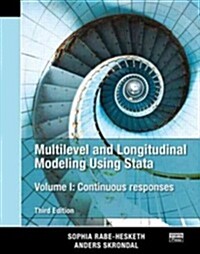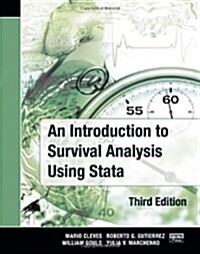
Discovering structural equation modeling using Stata
- 개인저자
- Alan C. Acock
- 판사항
- 1st ed
- 발행사항
- College Station, Tex.: Stata Press, 2013
- 형태사항
- xxiii, 304 p. : ill; 24cm
- ISBN
- 9781597181396
- 청구기호
- 413.8 A185d
- 서지주기
- Includes bibliographical references (p. [295]-296) and indexes
소장정보
| 위치 | 등록번호 | 청구기호 / 출력 | 상태 | 반납예정일 |
|---|---|---|---|---|
이용 가능 (1) | ||||
| 1자료실 | 00015093 | 대출가능 | - | |
- 등록번호
- 00015093
- 상태/반납예정일
- 대출가능
- -
- 위치/청구기호(출력)
- 1자료실
책 소개
Discovering Structural Equation Modeling Using Stata, Revised Edition is devoted to Stata’s sem command and all it can do. Learn about its capabilities in the context of confirmatory factor analysis, path analysis, structural equation modeling, longitudinal models, and multiple-group analysis. Each model is presented along with the necessary Stata code, which is parsimonious, powerful, and can be modified to fit a wide variety of models. The datasets used are downloadable, offering a hands-on approach to learning.
A particularly exciting feature of Stata is the SEM Builder. This graphical interface for structural equation modeling allows you to draw publication-quality path diagrams and fit the models without writing any programming code. When you fit a model with the SEM Builder, Stata automatically generates the complete code that you can save for future use. Use of this unique tool is extensively covered in an appendix and brief examples appear throughout the text.
This practical guide explores all the features of Stata’s sem command. This revised edition includes output, syntax, and instructions for fitting models with the Stata 13 SEM Builder. It shows how this graphical interface allows users to draw publication-quality path diagrams and fit the models without writing any programming code. Each model is presented along with the necessary Stata code. The datasets used are available for download online.
목차
Introduction to confirmatory factor analysis
Introduction
The "do not even think about it" approach
The principal component factor analysis approach
Alpha reliability for our nine-item scale
Generating a factor score rather than a mean or summative score
What can CFA add?
Fitting a CFA model
Interpreting and presenting CFA results
Assessing goodness of fit
A two-factor model
Parceling
Extensions and what is next
Exercises
Using the SEM Builder to run a CFA
Using structural equation modeling for path models
Introduction
Path model terminology
A substantive example of a path model
Estimating a model with correlated residuals
Auxiliary variables
Testing equality of coefficients
A cross-lagged panel design
Moderation
Nonrecursive models
Exercises
Using the SEM Builder to run path models
Structural equation modeling
Introduction
The classic example of a structural equation model
Equality constraints
Programming constraints
Structural model with formative indicators
Exercises
Latent growth curves
Discovering growth curves
A simple growth curve model
Identifying a growth curve model
An example of a linear latent growth curve
How can we add time-invariant covariates to our model?
Explaining the random effects?time-varying covariates
Constraining variances of error terms to be equal (optional)
Exercises
Group comparisons
Interaction as a traditional approach to multiple-group comparisons
The range of applications of Stata’s multiple-group comparisons with sem
A measurement model application
Multiple-group path analysis
Multiple-group comparisons of structural equation models
Exercises
Epilogue?what now?
What is next?
The graphical user interface
Introduction
Menus for Windows, Unix, and Mac
Designing a structural equation model
Drawing an SEM model
Fitting a structural equation model
Postestimation commands
Clearing preferences and restoring the defaults
B Entering data from summary statistics




